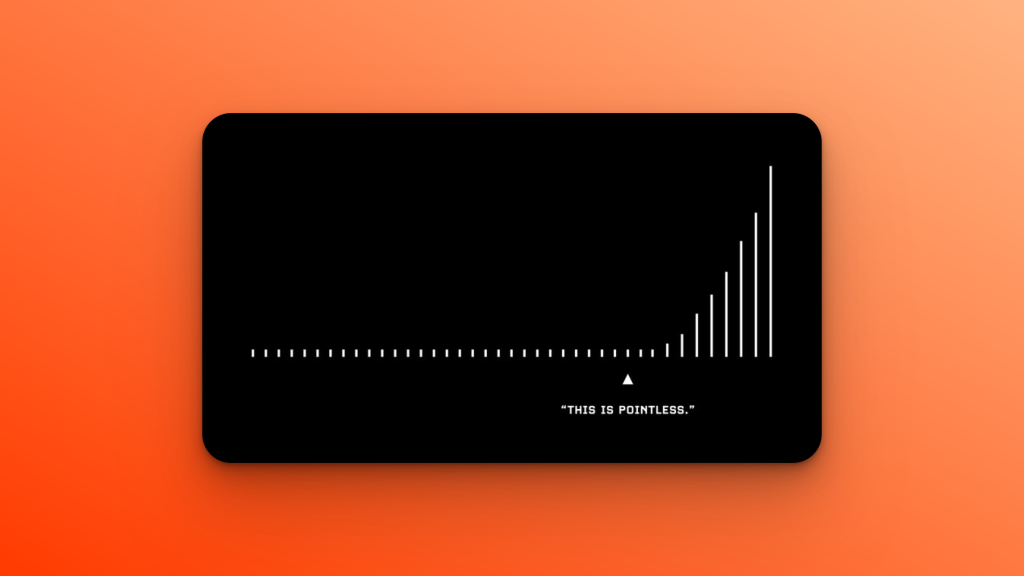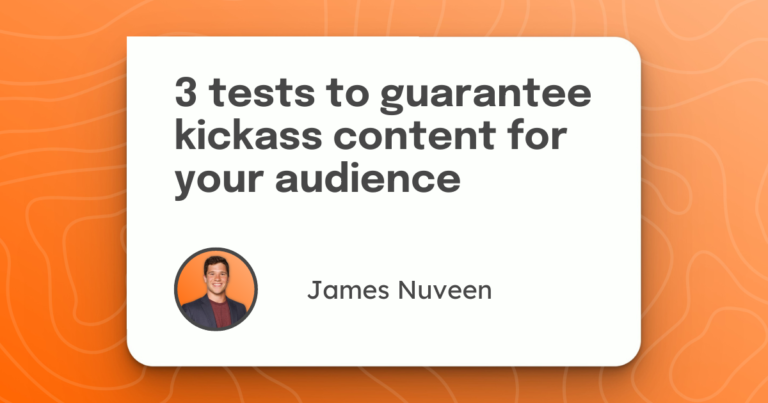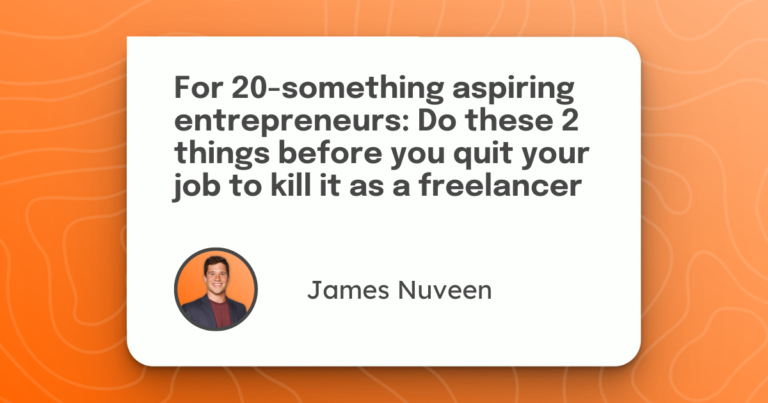The modern economy isn’t measured in dollars and cents.
Instead, the ultimate success metric is attention. Eyeballs and earholes.
In fact, the attention economy has dominated for a decade. And it’s only getting more prevalent.
The winner? Whoever can 1) get the most attention, 2) maintain it and 3) convert it to dollars.
Here is why you need to get attention and build an audience – yesterday.
1. Your customer wants to know what you think
Whether you’re an organization or an individual, your customer doesn’t know you exist until you tell them you do.
Your customers don’t need to know your stance on the latest TikTok trends, political issues or today’s national holiday. (National Sneak a Zucchini onto Your Neighbor’s Porch Day is August 8… I wish I were kidding.)
If content like that supports your customer, by all means.
But your ideal customer wants to know what you think. They want to know your POV on their problems. And of course, how you can solve them.
They want to know what sets you apart from your competition. Do you provide a better service? Do you have the best customer service in town? How about your prices – are they the lowest?
Dave Gerhardt said it best:
“The best marketing for B2B is education and expertise. People want help. Advice. Guidance. Templates. Playbooks. They want to save time. Reduce stress. Help their company be more successful so they can grow their career.
When you think like a media company, you try to pull people in with content that is educational and entertaining and attracts your dream customers. People who you might be able to sell to in the future.”
@exitfive Think like a media company, not a marketing team 🔑 #b2bmarketing #marketingtips #marketingstrategy #marketingonline
♬ Drake Instrumental Beats – Relajacion
Your audience associates your brand with a particular solution. When they think of X, they think of you.
Who comes to mind when you think of a fast food burger?
What about an insurance company?
These companies have branded themselves as X in your brain. Without even knowing it, you have an immediate response to each of these questions.
Who are you to your ideal customer?
It’s not the most measurable marketing tactic. But it works.
2. Diversify your platforms
Social media is fickle. One day, you’ll grow your audience by hundreds of fans. The next day, zero.
- You can get suspended or shadow banned without cause
- The powers-that-be can throttle your reach and impressions
- The algorithm will change and no longer favor your content
While social media is great for extra eyeballs, you can’t rely solely on Instagram to grow an audience. Not Twitter or Linkedin. Not even TikTok.
Plus, they’ve built their algorithms to keep their users (i.e. your customers) on the app. So it’s difficult to help your customers if you want them to do anything outside of numb, mindless scrolling.
So how can you diversify your reach?
First step is to build your audience on a few platforms. Where have you begun to get attention? Repurpose that content to other platforms with similar mediums. Examples: Twitter to Linkedin (text-based content), TikTok to Instagram and YouTube (video-based content).
Second step is to convert your audience to email.
Yes. Enter, email. Back from the dead.
Email is the only platform where you don’t compete for your customers’ attention. Your subscribers asked for your content. And when they open your email, they can’t just scroll their little finger to hide you and move on to the next piece of content.
In his weekly newsletter The Bootstrapped Founder, Arvid Kahl highlights platform risk. “If you depend on Twitter as the place where your audience is, you’re one technical glitch away from losing everything. Smart creators diversify.”
Watch the 2-minute video here:
If you depend on Twitter as the place where your audience is, you're one technical glitch away from losing everything.
— Arvid Kahl (@arvidkahl) May 4, 2022
Smart creators diversify.
Here's the why and the how: pic.twitter.com/eDJcZtC5nS
A couple more reasons to create an email list and newsletter:
- You have unlimited editing capabilities in email
- You have your audience’s undivided attention
- You can link your subscribers anywhere, without penalty
Decentralizing your audience from a single platform may seem like busy work at first. But in the end, you’ll be grateful you did it.
3. Increase your luck surface area
Alex Llull, a Spanish marketer, got fired from his marketing job in 2020. But he didn’t react like most would. He didn’t find a new job.
Nope.
He used the extra time on his hands to write about what he had learned in his marketing career. And he built an audience through the Steal Club – now one of my favorite newsletters.
Two years later, Alex freelances for global clients and writes to 30,000+ marketers on social and email.
In hindsight, Alex credits writing on Twitter for this transformation. “The opportunity of creating content on the internet is unparalleled.”
When you consistently share your perspective, the right people notice.
Justin Welsh has built an audience of almost half a million solopreneurs. You may have seen his content on Twitter or Linkedin.
He said, “By connecting with the right followers, you increase your ‘luck surface area,’ which is how you improve your life and business in the long term.”
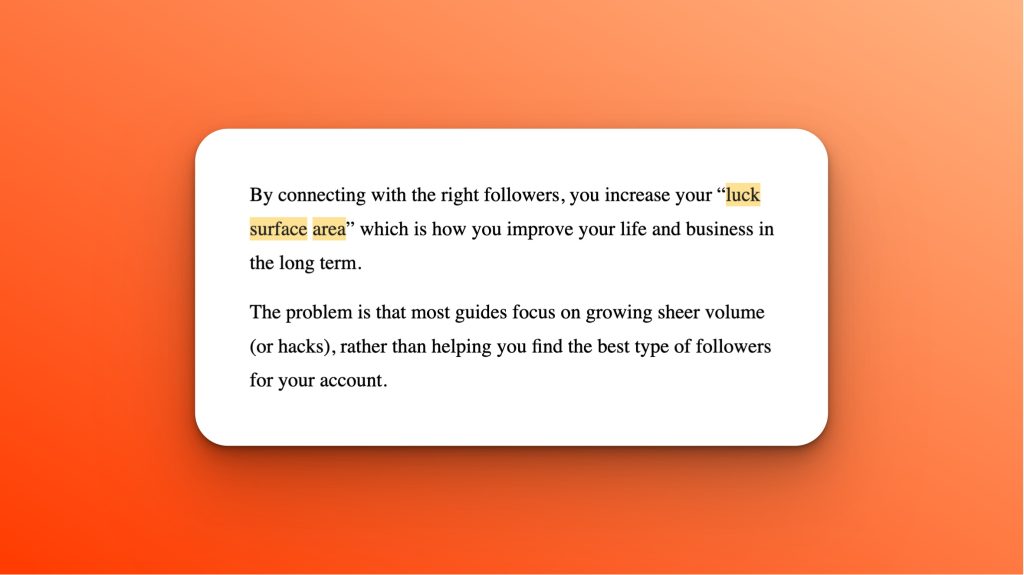
Your goal isn’t to connect with every single user on social media. Of course not. That’d be foolish. You want to connect with the right followers. The ones who you can help. The ones who need you.
(I’ll cover how to do this soon.)
And with an audience one million-strong, Sahil Bloom added:
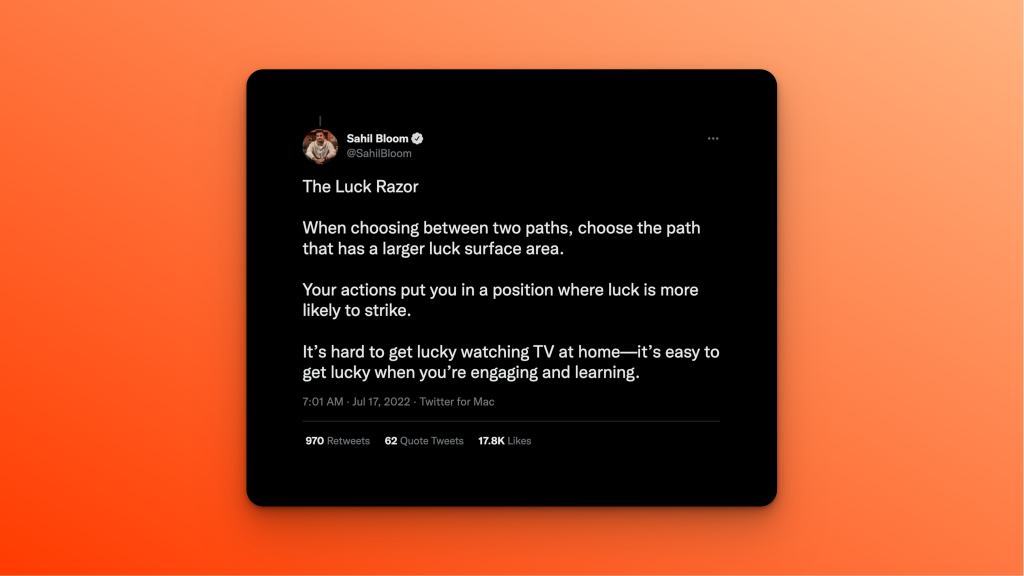
Two pieces of advice before you ride off into the content sunset:
First, this isn’t an approval to start posting whatever the heck you want.
- Keep it on brand. Would you say it face-to-face to your customer?
- Stay on topic.
- For the love of all that is holy, be helpful.
Second, you are not under a microscope. For as much as you think about your customer, they don’t think half as much about you. So don’t worry about dotting every i and crossing every t.
Just. Start. Sharing.
It will feel like you’re shouting into the void. But Rome wasn’t built in a day. Keep at it.
